AP US History Final
1/94
Earn XP
Description and Tags
Name | Mastery | Learn | Test | Matching | Spaced |
|---|
No study sessions yet.
95 Terms
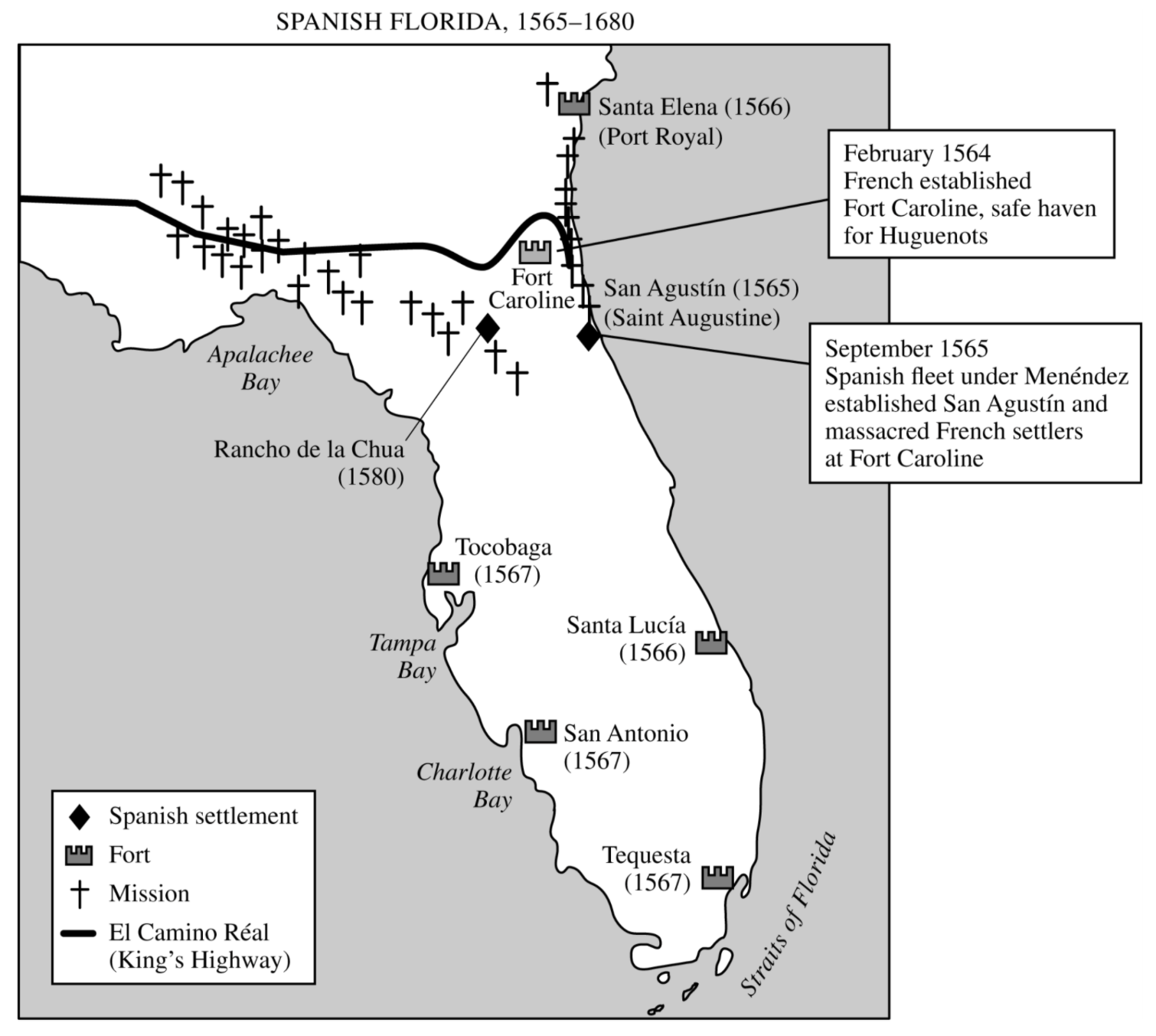
Which of the following best explains the presence of the Spanish in the areas depicted on the map?
A. The introduction of African slavery to Spanish Florida
B. The spread of maize culture from American Indians to the Spanish colonists
C. The outbreak of rebellion by the Pueblo Indians
D. The emergence of competition between European powers in the Americas
D. The emergence of competition between European powers in the Americas
“We have as yet no certaine proofe or experience concerning the vertues of… Corne, although the…Indians . . . are constrained to make a virtue of necessitie, and think it a good food: whereas we may easily judge that it nourisheth but little, and is of a hard… digestion, a more convenient food for swine than for men.” \n
- John Gerard, English botanist, The Herball or Generall Historie of Plantes, 1597
\n \n The development that brought “corne” to the attention of botanists such as Gerard is best known as the \n A. Enlightenment
B. Encomienda system
C. Trans-Atlantic slave trade
D. Columbian exchange
D. Columbian exchange
“The colonizers brought along plants and animals new to the Americas, some by design and others by accident. Determined to farm in a European manner, the colonists introduced their domesticated livestock—honeybees, pigs, horses, mules, sheep, and cattle—and their domesticated plants, including wheat, barley, rye, oats, grasses, and grapevines. But the colonists also inadvertently carried pathogens, weeds, and rats. . . . In sum, the remaking of the Americas was a team effort by a set of interdependent species led and partially managed (but never fully controlled) by European people.” \n \n - Alan Taylor, historian, American Colonies, 2001 \n
The export of New World crops to the Old World transformed European society mostly by
A. Improving diets and thereby stimulating population growth
B. Encouraging enclosure of open lands and pushing workers off of farms
C. Promoting greater exploration of the interior of the American continents
D. Fostering conflicts among major powers over access to new food supplies
A. Improving diets and thereby stimulating population growth
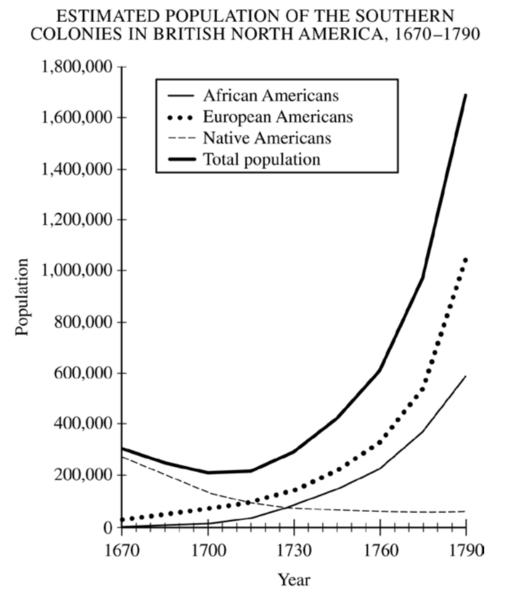
The trend in total population from 1670 to 1700 depicted on the graph is best explained by
A. The spread of epidemic diseases among Native Americans
B. Large-scale European migration
C. Food scarcity and extensive malnutrition among African Americans
D. Increases in life expectancy
A. The spread of epidemic diseases among Native Americans
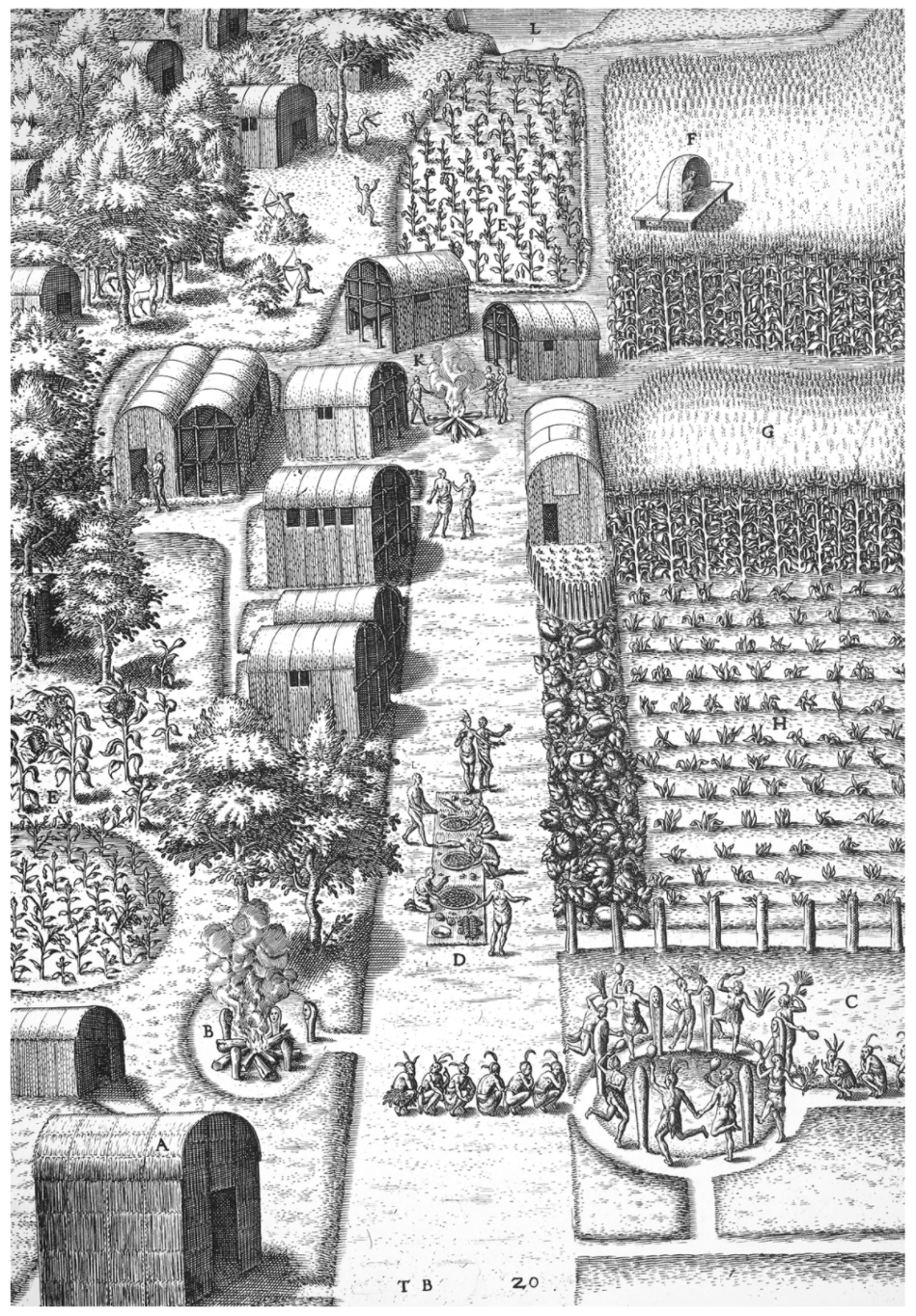
By the early 1600s, which of the following had most changed the circumstances of villages such as Secotan in eastern North America?
A. The impact of epidemic diseases introduced by Europeans
B. The decline of the fur and beaver trades
C. The establishment of permanent settlements by English colonists
D. The introduction of new foods into the Native American diet
A. The impact of epidemic diseases introduced by Europeans
“The Americas were discovered in 1492, and the first Christian settlements established by the Spanish the following year…. [I]t would seem… that the Almighty selected this part of the world as home to the greater part of the human race…. [T]heir delicate constitutions make them unable to withstand hard work or suffering and render them liable to succumb to almost any illness, no matter how mild. . . . It was upon these gentle lambs… that, from the very first day they clapped eyes on them, the Spanish fell like ravening wolves upon the fold, or like tigers and savage lions who have not eaten meat for days. . . . The native population, which once numbered some five hundred thousand, was wiped out by forcible expatriation to the island of Hispaniola.” \n \n - Bartolomé de Las Casas, 1552
\n \n Which of the following most directly resulted from the change in the Native American population described by Las Casas?
A. The Spanish imported Africans as a new source of labor.
B. The remaining native groups established alliances with the Spanish colonists.
C. Laborers on Hispaniola launched a large-scale rebellion against their Spanish oppressors.
D. The Spanish introduced new crops into the Americas, altering the native diet.
A. The Spanish imported Africans as a new source of labor.
We have as yet no certaine proofe or experience concerning the vertues of… Corne, although the…Indians . . . are constrained to make a virtue of necessitie, and think it a good food: whereas we may easily judge that it nourisheth but little, and is of a hard… digestion, a more convenient food for swine than for men.” \n
- John Gerard, English botanist, The Herball or Generall Historie of Plantes, 1597
\n Gerard’s description of “corne” in the excerpt best reflects which of the following?
A. Assumption about the superiority of European culture
B. Inability to find uses for North American crops
C. Curiosity about American Indian ways of life
D. Concerns about economic threats posed by North American imports
A. Assumption about the superiority of European culture
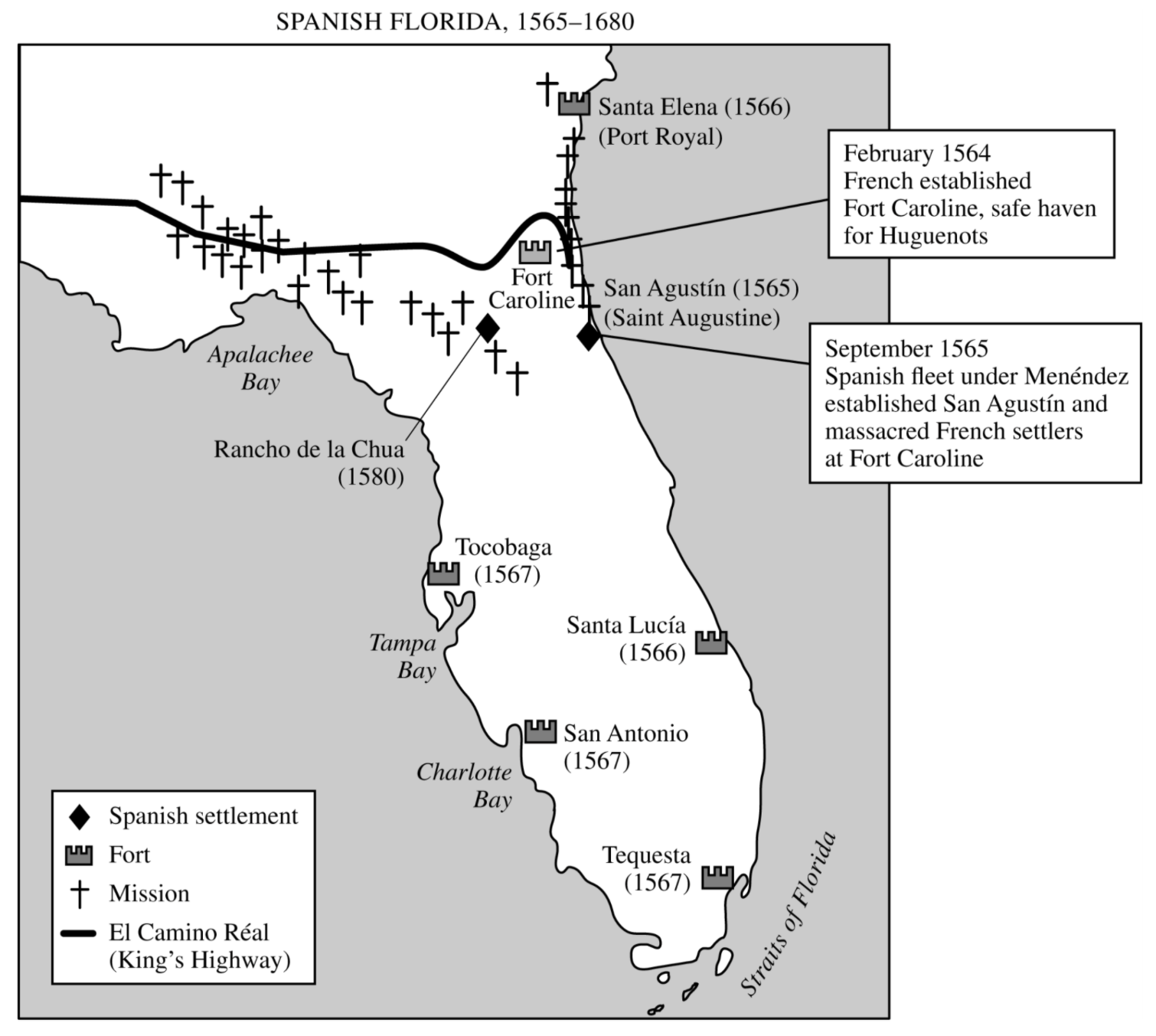
Which of the following was a major difference between the Spanish colonies in the Americas in the 1500s and the English colonies in the Americas in the early 1600s?
A. The Spanish tried to change American Indian worldviews, while the English generally accommodated them.
B. The Spanish adopted African slavery in their colonies, while the English relied more on American Indian labor
C. The Spanish more actively sought to convert American Indians to Christianity than did the English
D. The Spanish rejected assimilating American Indians into their culture, while the English favored assimilation
C. The Spanish more actively sought to convert American Indians to Christianity than did the English
“[S]ince a report had been made to the king on the fertility of the soil by [Sieur de Monts] and by me on the feasibility of discovering the passage to China, . . . his Majesty directed Sieur de Monts to make a new outfit, and send men to continue what he had commenced. . . . He was also influenced by the hope of greater advantages in case of settling in the interior, where the people are civilized,… than along the sea-shore, where the [natives] generally dwell. From this course, he believed the king would derive an inestimable profit; for it is easy to suppose that Europeans will seek out this advantage rather than those of a jealous and intractable disposition to be found on the shores.” \n \n -Samuel de Champlain, French explorer, 1604
\n The French most differed from the Spanish in relations with American Indians in that the French
A. Developed stronger alliances with American Indians
B. More frequently enslaved American Indians
C. Did not intermarry with American Indians
D. Converted more American Indians to Catholicism
A. Developed stronger alliances with American Indians
“English expectations of the New World and its inhabitants died hard. America was supposed to be a land of abundance, peopled by natives who would not only share that abundance with the English but increase it under English direction. Englishmen simply did not envisage a need to work for the mere purpose of staying alive. The problem of survival as they saw it was at best political and at worst military. Although Englishmen long remained under the illusion that the Indians would eventually become useful English subjects, it became apparent fairly early that Indian labor was not going to sustain the founders of Jamestown [Virginia].” \n \n — Edmund S. Morgan, historian, “The Labor Problem at Jamestown, 1607–18,” published in 1971
\n In the first half of the 1600s, American Indians in Virginia and Maryland most typically responded to the English colonization described in the excerpt by
A. Defending their territory against the English
B. Organizing communities to adopt English customs
C. Voluntarily moving farther west, away from the English
D. Allying with the French to counter English encroachment
A. Defending their territory against the English
“English expectations of the New World and its inhabitants died hard. America was supposed to be a land of abundance, peopled by natives who would not only share that abundance with the English but increase it under English direction. Englishmen simply did not envisage a need to work for the mere purpose of staying alive. The problem of survival as they saw it was at best political and at worst military. Although Englishmen long remained under the illusion that the Indians would eventually become useful English subjects, it became apparent fairly early that Indian labor was not going to sustain the founders of Jamestown [Virginia].” \n \n — Edmund S. Morgan, historian, “The Labor Problem at Jamestown, 1607–18,” published in 1971
\n Which of the following was a long-term result of the situation in Jamestown described in the excerpt?
A. The prioritizing of trade and shipbuilding over agricultural production
B. The removal of Spanish and French military threats to regional contro
C. The rise of the plantation system and the use of African slaves
D. The rapid growth of family-centered towns and villages
C. The rise of the plantation system and the use of African slaves
“We . . . the loyal subjects of our dread sovereign lord, King James,…having undertaken for the glory of God, and advancement of the Christian faith, and honor of our king and country, a voyage to plant the first colony in the northern parts of Virginia, do by these presents solemnly and mutually in the presence of God and one another, covenant and combine ourselves together into a civil body politic . . . and by virtue hereof to enact, constitute, and frame such just and equal laws, ordinances, acts, constitutions, and offices, from time to time, as shall be thought most meet [proper] and convenient for the general good of the colony unto which we promise all due submission and obedience.” \n \n - The Mayflower Compact, the first governing document of the Plymouth colony, 1620
\n
Which of the following best describes the primary purpose of the document from which the excerpt was taken?
A. Promoting a Protestant denomination
B. Advocating for intercolonial cooperation
C. Organizing a system of rules and order in the colony
D. Encouraging further English investment in the colony
C. Organizing a system of rules and order in the colony
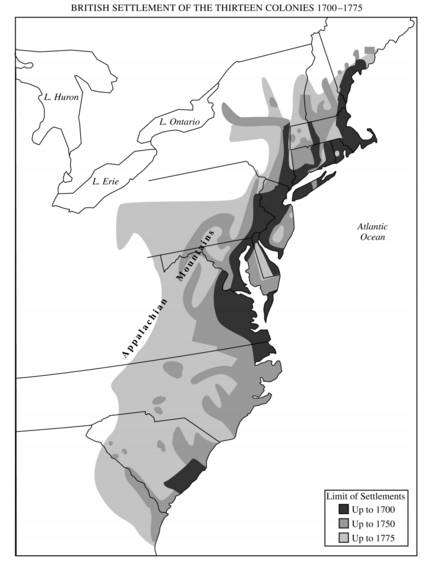
The pattern of colonial settlement up to 1700 resulted most directly from which of the following factors?
A. British recognition of Native American sovereignty
B. The large size of British colonial populations relative to American Indian populations
C. The orientation of the British colonies toward producing commodities for export to Europe
D. British government attempts to impose greater control over the colonies in the late 1600s
C. The orientation of the British colonies toward producing commodities for export to Europe
“Slavery, though imposed and maintained by violence, was a negotiated relationship…. First, even as they confronted one another, master and slave had to concede, however grudgingly, a degree of legitimacy to the other…. [T]he web of interconnections between master and slave necessitated a coexistence that fostered cooperation as well as contestation. Second, because the circumstances of such contestation and cooperation continually changed, slavery itself continually changed. . . . Slavery was never made, but instead was continually remade, for power—no matter how great—was never absolute, but always contingent.” \n \n - Ira Berlin, historian, Many Thousands Gone: The First Two Centuries of Slavery in North America, 1998 \n \n \n Which of the following contributed most to the increasing use of African slave labor in North America during the 1600s and 1700s?
A. The spread of European Enlightenment ideas in the colonies
B. A decline in regional distinctiveness among the colonies
C. Successful colonial attempts to convert enslaved Africans to Christianity
D. European demand for agricultural products grown in the colonies
D. European demand for agricultural products grown in the colonies
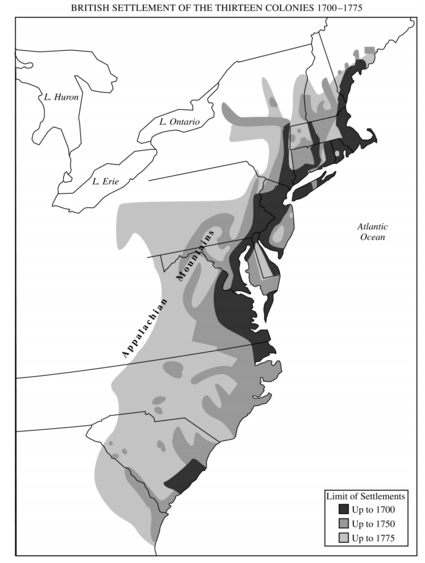
The change in settlement patterns from 1700 to 1775 best explains the
A. Development of economic differences between the northern and southern colonies
B. Significant proportion of colonists who remained loyal to Great Britain during the American Revolution
C. Colonists' difficulties in effectively resisting the British military during the American Revolution
D. Growth of social tensions between backcountry settlers and coastal elites
D. Growth of social tensions between backcountry settlers and coastal elites
Some of the more advanced Native American cultures did all of the following EXCEPT
A. Study mathematics
B. Make strikingly accurate astronomical observations
C. Cake strikingly accurate astronomical observations
D. Establish large, elaborate, and bustling cities
E. Engage in significant ocean voyages of discovery
E. Engage in significant ocean voyages of discovery
Which of the following Native American societies built over a dozen multi-story apartment buildings into Chaco Canyon?
A. Inca
B. Northeast Algonquian
C. Aztec
D. Great Plains Sioux
E. Anasazi
E. Anasazi
For subsistence, native tribes of the High Plains relied in large part on
A. Maize.
B. Bison herds.
C. Fishing.
D. Trade with Western and Southern tribes.
E. Gathering.
B. Bison herds.
In their relations with the Native Americans, the French and the Dutch
A. Drove them from their land in order to set up plantations.
B. Were ruthless in their treatment
C. Were at a distinct disadvantage
D. Tended to cultivate good relations because of the Native Americans’ knowledge of fur trapping
E. Were as obsessed with Christian conversion as the Spanish.
D. Tended to cultivate good relations because of the Native Americans’ knowledge of fur trapping
Compared to New England, Chesapeake society
A. Had fewer slaves
B. Had more cities
C. Possessed fewer families
D. Was more democratic
E. Has smaller farms
C. Possessed fewer families
The introduction of tobacco during the early 1600s in the Virginia colony led to the
A. Emergence of peaceful and cooperative relationships with neighboring American Indian peoples
B. Use of indentured servants, and later enslaved Africans, for agricultural labor
C. Development of a diversified economy
D. Devastating period of disease called the starving time
E. Concentration of settlers and farms into small towns and urban entities
B. Use of indentured servants, and later enslaved Africans, for agricultural labor
The principal motivation shaping the earliest settlements in New England (Plymouth and Massachusetts Bay) was
A. A spirit of adventure and interest in exploring the New World
B. The desire for political freedom
C. Economic opportunity and the chance for a better life
D. A mission to convert the Indians to Catholicism
E. The desire for religious freedom
E. The desire for religious freedom
The middle colonies - New York, New Jersey, Delaware, and Pennsylvania - all had which of the following traits in common?
A. Few industries or port cities for trade with England and other colonies
B. Rich, fertile soil that enabled the region to produce and export vast quantities of grain
C. A population that was less ethnically and religiously mixed than other regions
D. Landholdings that were generally small in size
E. Soil that was typically rocky and often difficult to farm
B. Rich, fertile soil that enabled the region to produce and export vast quantities of grain
In their colonization of the Americas, the Spanish used the encomienda system to
A. Improve trade relations with Native Americans
B. Draft Native Americans into the Spanish military
C. Organize and regulate Native American labor
D. Limit intermarriage between Spaniards and Native Americans
C. Organize and regulate Native American labor
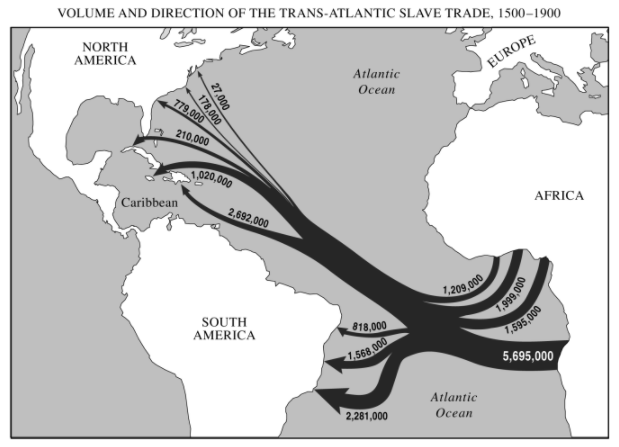
The major pattern on the map best supports which of the following statements?
A. Fewer people lived in the British colonies than in the Spanish colonies.
B. Enslaved Africans were most likely to live on large plantations in North America than in the Caribbean
C. British colonies in North America typically had a lower demand for slave labor than did the colonies of other European countries.
D. Africans in North America were more likely to resist slavery than were Africans in South America
C. British colonies in North America typically had a lower demand for slave labor than did the colonies of other European countries.
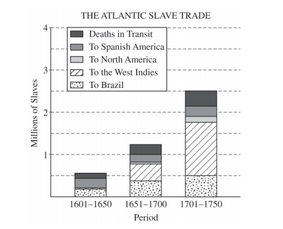
The trend shown on the graph above was caused by the expansion in the production of
A. Tobacco
B. Cotton
C. Bananas
D. sugar
E. Rice
D. sugar
The slave codes
A. Dictated that the condition of the child followed that of the father.
B. Allowed masters to punish slaves as they saw fit and required that slaves have written permission to leave plantations.
C. Limited the number of slaves that could be owned at any one time.
D. Required that slaves register to carry firearms.
E. Established the rules for conducting slave auctions in Virginia.
B. Allowed masters to punish slaves as they saw fit and required that slaves have written permission to leave plantations.
Since a majority of the population of South Carolina was enslaved in 1750, which of the following unique conditions for enslaved people existed in region?
A. Frequent conversion to evangelical Christianity
B. Widespread opportunities for literacy
C. Relative autonomy to preserve and adapt African traditions
D. Extensive apprenticeships in skilled trades
C. Relative autonomy to preserve and adapt African traditions
The dissatisfaction of Virginia farmers with the colonial governor who failed to protect them against American Indian raids led to
A. The Glorious Revolution
B. Leisler's Rebellion
C. Gabriel's Revolution
D. Bacon's Rebellion
E. Shay's Rebellion
D. Bacon's Rebellion
Which of these reasons did NOT drive the European exploration that led to the "discovery" of the New World?
A. The desire to expand their empires and power
B. The quest for a cheaper route to the East
C. The desire to make contact and learn from the Native American civilizations
D. Spreading Christianity
E. Finding an alternative trade source for spices, sugar and other expensive eastern goods
C. The desire to make contact and learn from the Native American civilizations
The "Great Awakening" religious movement that spread through British North American colonies in the 1700s was most directly shaped by
A. Interest in commerce and business
B. Reliance on agriculture
C. Trans-Atlantic exchanges
D. Roman Catholic influences
C. Trans-Atlantic exchanges
The preaching style that became popular during the First Great Awakening serves as an example of which of the following developments in the 1700s?
A. The emergence of calls for the abolition of slavery
B. The increasing influence of the Enlightenment
C. The development of an idea of republican self-government
D. The expansion of Protestant evangelism
D. The expansion of Protestant evangelism
The Great Awakening contributed most directly to which of the following trends?
A. Greater independence and diversity of thought
B. The growth of the ideology of republican motherhood
C. The pursuit of social reform
D. Movement of settlers to the backcountry
A. Greater independence and diversity of thought
The French and Indian War was a pivotal point in America's relationship to Great Britain because it led Great Britain to
A. Grant increased colonial self-government
B. Restrict immigration from England
C. Encourage colonial manufactures
D. Impose revenue taxes on the colonies
E. Ignore the colonies
D. Impose revenue taxes on the colonies
Which of the following statements about the French & Indian War is FALSE?
A. George Washington participated in the war
B. Following the war, the British restricted the westward settlements of American colonists
C. The British national debt greatly increased as a result of fighting the war
D. Indian tribes were divided in their loyalties, with some assisting the French and others the British
E. The French gained a great deal of territory at the 1763 Peace of Paris negotiations
E. The French gained a great deal of territory at the 1763 Peace of Paris negotiations
The main purpose of the Stamp Act was to
A. Impose a mercantilist system in the colonies
B. Reduce colonial consumption of foreign goods
C. Fund the colonial postal system
D. Reduce the authority of the colonial legislatures
C. Fund the colonial postal system
The year 1763 was a watershed year because of all of the following EXCEPT:
\n
Note: a "watershed" year = an important year, or a turning point.
A. Saw the King of England draw the Proclamation Line down the fall line of the Appalachian Mountains
B. Saw the uprisings of Cherokee, the Iroquois, and Pontiac’s Rebellion occur
C. Brought to an end the bickering and tensions of the Native Americans and colonist
D. The signing of the Peace of Paris
E. Gave Britain unparalleled claims within North America
C. Brought to an end the bickering and tensions of the Native Americans and colonist
The Proclamation of 1763
A. Exacted burdensome taxes from the colonists to finance Britain’s war debts.
B. Established royal governors in the colonies.
C. Granted some coastal territory to Native Americans.
D. Made Florida a British territory.
E. Prohibited colonists from settling beyond the Appalachians.
E. Prohibited colonists from settling beyond the Appalachians.
The Proclamation of 1763 sought to
A. Make provisions for prosecuting smugglers before Admiralty courts
B. Establish British control over New France
C. Prevent conflicts between Colonists and American Indians on the colonial frontier
D. Raise revenue in the British North American colonies to pay for the war against France
E. Affirm the power of Parliament over the colonies
C. Prevent conflicts between Colonists and American Indians on the colonial frontier
Arrange these events in chronological order: (A) Stamp Act, (B) Townshend Acts, (C) Tea Party, and (D) Intolerable Acts.
A. C,B,D,A
B. D,B,C,A
C. A,B,C,D
D. A,C,D,B
E. B, A,C,D
C. A,B,C,D
One direct long-term effect of the Navigation Acts was that they
A. Contributed to the rise of opposition that ultimately fostered the independence movement
B. Promoted commercial treaties with Spain and France throughout the 1700s
C. Encouraged colonists in North America to expand trade agreements with American Indians
D. Led to the imposition of heavy taxes on the North American colonists in the early 1700s
A. Contributed to the rise of opposition that ultimately fostered the independence movement
All of the following were examples of colonial protest against the Stamp Act EXCEPT
A. Using the phrase “no taxation without representation”
B. Dumping tea from the East India Company into Boston Harbor.
C. Convening a colonial congress to request repeal of the act.
D. Violence in several colonial towns.
E. A colonial boycott against British goods.
B. Dumping tea from the East India Company into Boston Harbor.
Which of the following is the most likely reason why many historians date the beginning of the American Revolution to the 1760s, immediately after the French & Indian War ended?
A. The forging of American Indian political alliances with European powers
B. The expansion of the colonial population into the interior of the continent
C. Renewed efforts by Great Britain to consolidate imperial control over the colonies
D. Increased involvement of colonial merchants in the Atlantic economy
C. Renewed efforts by Great Britain to consolidate imperial control over the colonies
The American colonists’ slogan “No taxation without representation” was a rejection of
A. Virtual representation
B. Nativism
C. Classical republicanism
D. Salutary neglect
E. Mercantilism
A. Virtual representation
"[G]overnments are instituted among Men, deriving their just powers from the consent of the governed. That whenever any Form of Government becomes destructive of these ends, it is the Right of the People to alter or to abolish it, and to institute new Government, laying its foundation on such principles and organizing its powers in such form, as to them shall seem most likely to effect their Safety and Happiness."
- Thomas Jefferson, Declaration of Independence, 1776
The ideas about government expressed by Jefferson are most consistent with which of the following?
A. The principles of religious freedom
B. The belief in Manifest Destiny
C. The concept of hereditary rights and privileges
D. The divine right of kings
E. The ideas of the Enlightenment
E. The ideas of the Enlightenment
Thomas Paine's Common Sense and Thomas Jefferson's Declaration of Independence were both written in response to
A. Colonial governments' failures to implement mercantilist policies
B. Colonial governments' attempts to extend political rights to new groups
C. British government's failure to protect colonists from attacks by American Indians
D. British government's attempt to assert greater control over the North American colonies
D. British government's attempt to assert greater control over the North American colonies
The ideas about government expressed by Thomas Paine's Common Sense and Thomas Jefferson's Declaration of Independence are most consistent with which of the following?
A. The concept of hereditary rights and privileges
B. The principle of religious freedom
C. The ideas of the Enlightenment
D. The belief of Manifest Destiny
C. The ideas of the Enlightenment
Women contributed to the revolutionary war in all of the following ways EXCEPT
A. They enforced boycotts.
B. Thousands of women formed guerrilla military units, attacking British officers from the cover of their homes.
C. Temporarily, New Jersey women exercised the right to vote under the state's first constitution.
D. They made clothing from non-imported fibers.
E. They raised funds for the Continental Army.
B. Thousands of women formed guerrilla military units, attacking British officers from the cover of their homes.
The typical patriotic woman contributed to the American Revolution by engaging in which of the following activities during the conflict?
A. Writing plays in support of independence
B. Joining militias so that they could fight on the front lines of battle
C. Campaigning for the right to vote as a wartime measure
D. Producing goods for the Patriot cause
D. Producing goods for the Patriot cause
What happened to the established churches in the new republic after the American Revolution?
A. Many were disestablished, as more state constitutions allowed for separation of church and state.
B. They withdrew completely from the colonies.
C. They continued to grow, remain established and gain new adherents.
D. They sought to create an official national religion for the United States.
A. Many were disestablished, as more state constitutions allowed for separation of church and state.
Republicanism is best defined as…
A. taxation without representation.
B. the division of government into judiciary, executive, and legislature.
C. government based on the consent of the people and the protection of individual rights.
D. the right to vote for all.
E. the presence of a constitution.
C. government based on the consent of the people and the protection of individual rights.
The Battle of Saratoga was a key victory for the Americans because it
A. kept Benedict Arnold from joining the British.
B. brought the British to offer recognition of colonial independence.
C. prevented the colonial capital from being captured by the British.
D. brought the colonists much-needed aid and a formal alliance with France.
E. prevented the fighting from spreading into the southern colonies.
D. brought the colonists much-needed aid and a formal alliance with France.
French aid to the colonies did all of the following EXCEPT
A. was motivated by what the French considered to be their own national interests.
B. allowed American forces to focus only on the southern theater.
C. helped them protect their own West Indies islands.
D. forced the British to change their military strategy in America.
E. greatly aided America's struggle for independence.
B. allowed American forces to focus only on the southern theater.
In which of the following ways did slavery change in the late 1700s?
A. The argument that slavery was a positive social institution became widely accepted
B. The holding of slaves as property became a symbol of social status in the North
C. The ideals of the American Revolution prompted some individuals and groups to call for the abolition of slavery.
D. The expansion of slavery into the Northwest Territory became a divisive political issue in the new United States.
C. The ideals of the American Revolution prompted some individuals and groups to call for the abolition of slavery.
During and immediately after the Revolutionary era, which of the following resulted most directly from the efforts of women who contributed to the patriotic cause of the Revolution?
A. The ideal that women would teach republican values
B. The reform of laws regarding women's property ownership
C. The extension of voting rights to women nationwide
D. The creation of a national network of abolitionist societies
A. The ideal that women would teach republican values
The Anti-Federalists' view of government power during the 1780s is best reflected by which of the following?
A. Debates about incorporation of new territories into the United States
B. The existence of many state constitutions that limited executive authority
C. The shift from emphasizing inherited wealth and status to emphasizing individual merit
D. The expansion of women's political roles as a result of the ideas of republican motherhood
B. The existence of many state constitutions that limited executive authority
The criticisms of centralized power, monarchies and strong executives that was unleashed by the American Revolution best accounts for which of the following features of the United States during and immediately after the American Revolution?
A. The creation of new state constitutions that placed most power in the hands of the legislative branch
B. The development of factions and nascent political parties
C. The growth of conflict between wealthy elites and poor farmers and laborers
D. The rapid expansion of frontier settlements
A. The creation of new state constitutions that placed most power in the hands of the legislative branch
Which of the following statements about the Articles of Confederation is FALSE?
A. that its single legislative body gave some smaller states an unfair advantage
B. that it gave too much power to the central government
C. that it failed to adequately confront threats from Britain and Spain along U.S. borders
D. that it was unable to deal with the country’s fiscal instability
E. that it failed to deal with the nation’s economic problems
B. that it gave too much power to the central government
Shays's Rebellion convinced many Americans of the need for
A. a vigilante effort by westerners to halt the Indian threat.
B. a stronger central government.
C. a weaker military presence in the West.
D. lower taxes.
E. granting long-delayed bonuses to Revolutionary War veterans.
B. a stronger central government.
One of the most important accomplishments of Congress under the Articles of Confederation was its
A. passage of ordinances organizing the Northwest Territory
B. management of the nation’s financial affairs
C. set of rules for interstate trade
D. rejection of British demands for territory along the country’s borders with Canada
E. disposition of the Florida border problem with Spain
A. passage of ordinances organizing the Northwest Territory
Since most of the delegates at the Constitutional Convention distrusted pure democracy and surrendering power to the uneducated masses, which of the following provisions was included in the Constitution to insure against this?
A. The process of electing members of the House of Representatives
B. The method of counting slaves for representation and taxation
C. The establishment of the Supreme Court
D. The addition of the Bill of Rights
C. The establishment of the Supreme Court
Under the Constitution, the president of the United States was to be elected by a majority vote of the
A. Electoral College.
B. general public.
C. House of Representatives.
D. Senate.
E. state legislatures.
A. Electoral College.
As originally ratified, the United States Constitution provided for
A. the direct election of United States senators
B. a presidential Cabinet
C. political parties
D. a two-term presidential limit
E. an electoral college
E. an electoral college
The Constitutional Convention of 1787 did all of the following EXCEPT
A. establish a balance of power between the three branches of the national government
B. create a strong central government that would not threaten the sovereignty of the states
C. determine provisions to be included in the Bill of Rights
D. create a government that would be satisfactory to both slave and free states
E create a government that would satisfactory to both large and small states
C. determine provisions to be included in the Bill of Rights
The antifederalist camp included all of the following groups EXCEPT
A. states' rights supporters.
B. paper money advocates.
C. backcountry dwellers.
D. debtors.
E. supporters of a strong central government.
E. supporters of a strong central government.
Which of the following most directly addressed reservations Anti-Federalists had about ratification of the Constitution?
A. The addition of the Bill of Rights to the Constitution
B. The election of George Washington as the nation's first president
C. The rise of sectional unity in the new republic
D. The establishment of the nation's first political parties
A. The addition of the Bill of Rights to the Constitution
The Federalist papers were written in order to
A. persuade voters to support Thomas Jefferson in the election of 1800
B. persuade the Continental Congress to declare independence
C. mobilize popular support for keeping the Articles of Confederation\
D. encourage ratification of the Constitution
E. frustrate Spanish efforts to sway the political loyalty of the Southwest
D. encourage ratification of the Constitution
Probably the most alarming characteristic of the new Constitution to those who opposed it was the
A. creation of a federal district for the national capital.
B. absence of a bill of rights.
C. creation of the presidency.
D. creation of a standing army.
E. omission of any reference to God.
B. absence of a bill of rights.
Under the original 1787 Constitution, the one branch of the government elected directly by the people is the
A. judiciary.
B. executive.
C. military.
D. Senate.
E. House of Representatives.
E. House of Representatives.
Which statement is true of the United States Constitution?
A. The Constitution was modeled on the French system of government.
B. Thomas Jefferson was the author of the Constitution.
C. The Constitution cannot be amended.
D. The Constitution's checks and balances helped establish a stable government.
E. The Constitution established a unicameral legislature.
D. The Constitution's checks and balances helped establish a stable government.
Which of the following was a reason the United States government believed it necessary to negotiate a treaty with Great Britain (Jay's Treaty) following the American Revolution?
A. Northerners hoped that Britain's antislavery position would pressure southern states to abolish slavery.
B. The government wanted to mediate a better relationship between France and Britain to help bring peace to the European continent.
C. British activities and landholdings in North America were an impediment to western settlement and peace along the frontier.
D. The Washington administration wanted to improve relations to encourage France to sell the Louisiana Territory.
C. British activities and landholdings in North America were an impediment to western settlement and peace along the frontier.
Which of the following was an important consequence of the debate over the Jay Treaty?
A. Sectional tensions between the West and the South increased.
B. Strong disagreements over policy promoted the development of political parties.
C. The United States adopted a policy of isolationism.
D. Federalists introduced legislation in Congress to establish a constitutional monarchy on the British model.
B. Strong disagreements over policy promoted the development of political parties.
The Alien & Sedition Acts were passed in response to which of the following challenges?
A. The threat posed by foreign alliances and entanglements.
B. The potential for Anti-Federalist criticism and sabotage of the Constitution.
C. The constant fear of Indian attacks along the frontier.
D. The limitations of the Articles of Confederation.
A. The threat posed by foreign alliances and entanglements.
Which of the following was true of the Democratic-Republican Party?
A. It was supported by Alexander Hamilton
B. It was headed by John Adams.
C. It favored Jay's Treaty
D. It supported France over Britain whenever the opportunity arose.
E. It supported a national bank.
D. It supported France over Britain whenever the opportunity arose.
The concerns expressed by Washington in his Farewell Address were a response to the
A. conflict with Great Britain over the treatment of American Loyalists
B. dispute over the possibility of annexing Canada from Great Britain
C. controversy regarding support for the revolutionary government of France
D. debates over the proper treatment of American Indian tribes in the trans-Appalachian West
C. controversy regarding support for the revolutionary government of France
Alexander Hamilton's financial plan for strengthening the economy and bolstering national credit proposed all of the following EXCEPT
A. assumption of state debts into a national debt.
B. abolishing tariffs.
C. raising revenue through an excise tax on whiskey.
D. establishing a national bank.
B. abolishing tariffs.
"To make all laws which shall be necessary and proper for carrying into execution the foregoing powers, and all other power vested by this Constitution."
Alexander Hamilton used the clause above to
A. substantiate his strict interpretation of the Constitution
B. support his argument for a strong central government in The Federalist papers
C. convince the federal government to create the First National Bank of the United States
D. lobby Congress for a reduced tariff to promote international trade
E. justify revising the Articles of Confederation
C. convince the federal government to create the First National Bank of the United States
The Jeffersonian Democratic-Republicans presented themselves as all of the following EXCEPT
A. believers in a strong central government.
B. strong supporters of state's rights.
C. strict constructionists.
D. believers of political and economic liberty.
E. protectors of an agrarian republic.
A. believers in a strong central government.
Which of the following was NOT a Hamiltonian idea?
A. The government should try to foster commercial and industrial development
B. State governments would pay their own debts, and avoid creating a common shared national debt
C. A national bank was necessary for the country’s economic health
D. The development of an excise tax on whiskey would generate needed revenue
E. The new central government would survive if the wealthiest people supported it.
B. State governments would pay their own debts, and avoid creating a common shared national debt
To the Jeffersonian Republicans, the ideal citizen of a republic was a(n)
A. town artisan.
B. indentured servant.
C. seaboard merchant.
D. industrialist.
E. independent small farmers.
E. independent small farmers.
By the 1790s the ideas of the Anti-Federalists contributed most directly to the
A. continued use of property qualifications for voting in most states
B. imposition of a protective tariff
C. resistance of western farmers to federal oversight
D. abolition of the trans-Atlantic slave trade
C. resistance of western farmers to federal oversight
What famous event occurred in 1787?
A. The U.S. Constitution was written
B. The Articles of Confederation were written
C. The United States declared independence from Great Britain
D. The U.S. Constitution was ratified
E. George Washington became our 1st president
A. The U.S. Constitution was written
What era came to a close with the end of the French & Indian War in 1763?
A. Confederation Era
B. Antebellum Era
C. Revolutionary Era
D. Colonial Era
D. Colonial Era
The ratification of the Constitution marks the end of what historical period?
A. the Confederation Period
B. the Revolutionary Period
C. the Colonial Period
D. the Era of Reconstruction
E. the Antebellum Era
A. the Confederation Period
What year did Columbus "sail the ocean blue" and land in the Americas?
1492
What year was Jamestown founded?
1607
In what year did the United States declare independence?
1776
In what year was the Constitution ratified? Also, George Washington became the first President of the United States in this year.
1789
“In 1739 arrived among us from Ireland the Reverend Mr. [George] Whitefield, who had made himself remarkable there as an itinerant preacher. He was at first permitted to preach in some of our churches; but the clergy, taking a dislike to him, soon refused him their pulpits, and he was obliged to preach in the fields. The multitudes of all sects and denominations that attended his sermons were enormous. . . . It was wonderful to see the change soon made in the manners of our inhabitants. From being thoughtless or indifferent about religion, it seemed as if all the world were growing religious, so that one could not walk thro’ the town in an evening without hearing psalms sung in different families of every street.” \n \n - Benjamin Franklin, The Autobiography of Benjamin Franklin
\n Whitefield's impact suggests that religious culture among British North American colonists in the 1700s was most directly shaped by
A. interest in commerce and business
B. reliance on agriculture
C. trans-Atlantic exchanges
D. Roman Catholic influences
C. trans-Atlantic exchanges
“May it . . . please your most excellent Majesty, that it may be declared . . . in this present parliament assembled, and by the authority of the same, That the said colonies and plantations in America have been, are, and of right ought to be, subordinate unto, and dependent upon the imperial crown and parliament of Great Britain; . . . and [they] of right ought to have, full power and authority to make laws and statutes of sufficient force and validity to bind the colonies and people of America, subjects of the crown of Great Britain, in all cases whatsoever.” \n \n - The Declaratory Act, passed by the British Parliament in 1766 \n \n
Which of the following contributed most directly to the enactment of the law in the excerpt?
A. Debates over how British colonies should bear the cost of the Seven Years' War (French and Indian War)
B. The increasing divergence between colonial and British culture in the 1700s
C. Conflicts between colonists and British army leaders recognizing Native American sovereignty
D. The drafting of a declaration of independence for Britain's colonies in North America
A. Debates over how British colonies should bear the cost of the Seven Years' War (French and Indian War)
“Today, two hundred and fifty years after the French and Indian War, most Americans are no more familiar with its events and significance than they are with those of the Peloponnesian War. Few know that George Washington struck the first spark of a war that set the British North American frontier ablaze from the Carolinas to Nova Scotia, then spread to Europe, Canada, the Caribbean, West Africa, India, and, finally, the Philippines. Historians call this immense conflict the Seven Years’ War; . . . Winston Churchill described it as ‘the first world war.’” \n \n - Fred Anderson, The War That Made America: A Short History of the French and Indian War, 2005 \n \n \n Which of the following best explains a result of the Seven Years’ War (French and Indian War) ?
A. Great Britain and Spain established an alliance.
B. France sold the Louisiana Territory to Great Britain.
C. Great Britain gained a claim to land extending to the Mississippi River.
D. British influence over its North American colonies decreased.
C. Great Britain gained a claim to land extending to the Mississippi River.
“That a British and American legislature, for regulating the administration of the general affairs of America, be proposed and established in America, including all the said colonies; within, and under which government, each colony shall retain its present constitution, and powers of regulating and governing its own internal police, in all cases whatsoever.
“That the said government be administered by a President General, to be appointed by the King and a Grand Council, to be chosen by the representatives of the people of the several colonies, in their respective assemblies, once in every three years.”
- Joseph Galloway, “A Plan of a Proposed Union Between Great Britain and the Colonies,” proposal debated by the First Continental Congress, 1774 \n \n
The key concern that Galloway's plan was designed to address was the
A. demand for back pay for veterans of the French and Indian War (Seven Years' War)
B. complaint about high tariffs imposed on colonial merchants for exports to Great Britain
C. lack of American representation in the British Parliament
D. continuing security threat posed by the French in Canada
C. lack of American representation in the British Parliament
“May it . . . please your most excellent Majesty, that it may be declared . . . in this present parliament assembled, and by the authority of the same, That the said colonies and plantations in America have been, are, and of right ought to be, subordinate unto, and dependent upon the imperial crown and parliament of Great Britain; . . . and [they] of right ought to have, full power and authority to make laws and statutes of sufficient force and validity to bind the colonies and people of America, subjects of the crown of Great Britain, in all cases whatsoever.” \n \n - The Declaratory Act, passed by the British Parliament in 1766 \n \n
The actions described in the excerpt most immediately led to
A. Parliament strengthening its approach to generating new tax revenue in the North American colonies
B. major and sometimes violent conflicts emerging between the various colonial regions
C. Britain delegating greater authority to colonial assemblies
D. a colonial convention to call for independence from Britain
A. Parliament strengthening its approach to generating new tax revenue in the North American colonies
“Wherefore, security being the true design and end of government, it unanswerably follows that whatever form thereof appears most likely to ensure it to us, with the least expense and greatest benefit, is preferable to all others…. Here too is the design and end of government, Freedom and Security.”
- Thomas Paine, Common Sense, 1776
“[G]overnments are instituted among Men, deriving their just powers from the consent of the governed. That whenever any Form of Government becomes destructive of these ends, it is the Right of the People to alter or to abolish it, and to institute new Government, laying its foundation on such principles and organizing its powers in such form, as to them shall seem most likely to effect their Safety and Happiness.”
- Thomas Jefferson, Declaration of Independence, 1776
The ideas about government expressed by Paine and Jefferson are most consistent with which of the following?
A. The belief of Manifest Destiny
B. The principle of religious freedom
C. The ideas of the Enlightenment
D. The concept of hereditary rights and privileges
C. The ideas of the Enlightenment
“[George] Washington’s gratitude was genuine . . . but the fact remains that the members of the association, who had embarked on a very unfeminine enterprise, were ultimately deflected into a traditional domestic role…. Ironically and symbolically, the Philadelphia women of 1780, who had tried to establish an unprecedented nationwide female organization, ended up as what one amused historian has termed ‘General Washington’s Sewing Circle.’ \n “Male Revolutionary leaders too regarded women’s efforts with wry condescension. . . . The women, on the other hand,… could reflect proudly that ‘whilst our friends were exposed to the hardships and dangers of the fields of war for our protection, we were exerting at home our little labours to administer to their comfort and alleviate their toil.’” \n \n - Mary Beth Norton, historian, “The Philadelphia Ladies Association,” American Heritage, 1980
\n The women described in the excerpt would have most typically engaged in which of the following activities during the Revolutionary era?
A. Campaigning for the right to vote as a wartime measure
B. Joining militias so that they could fight on the front lines of battle
C. Producing goods for the Patriot cause
D. Writing plays in support of independence
C. Producing goods for the Patriot cause